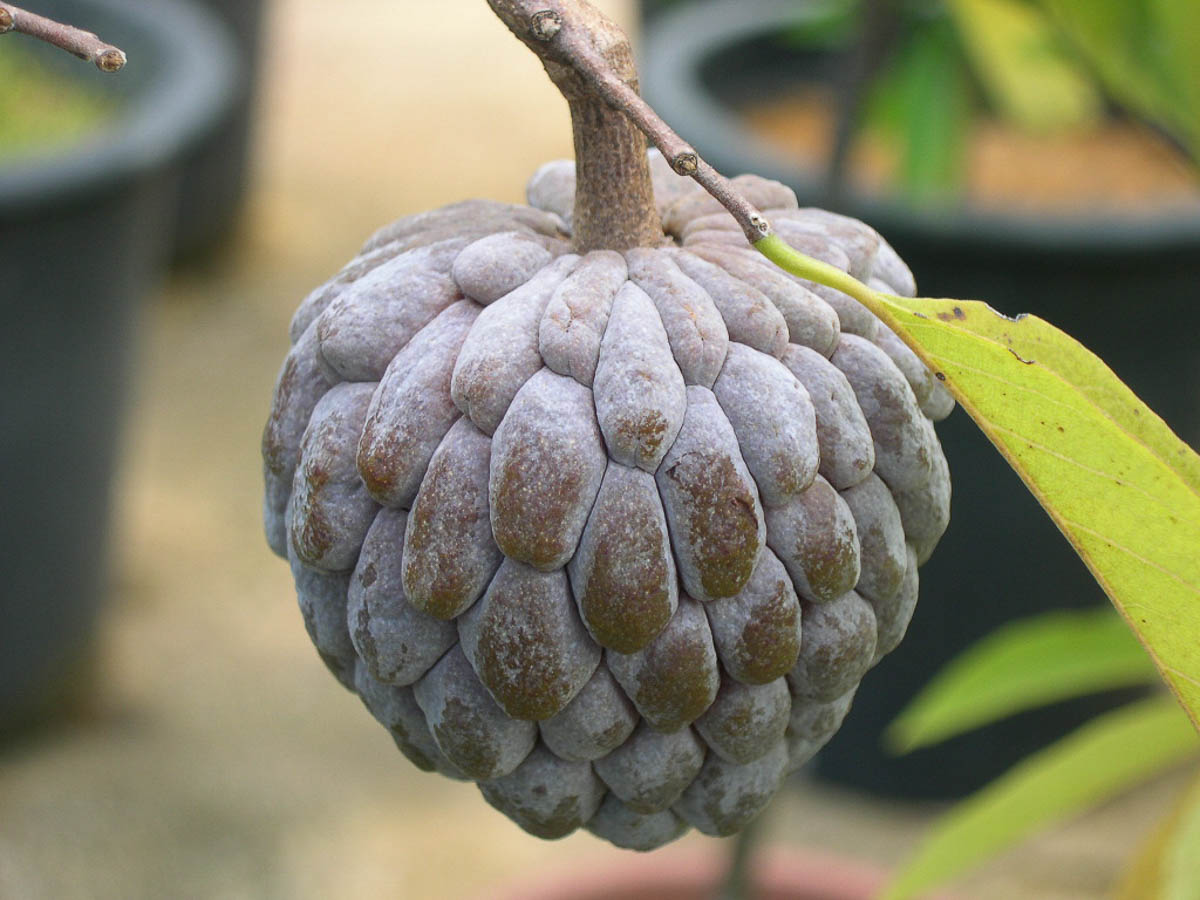Custard Apple
Custard Apple (Annona squamosa)
Other common names: Sugar Apple, Sweetsop, Buah Nona, Seri Kaya, Anona, Nona, Bullock's Heart, 番荔枝

Custard Apples are small trees with fragrant flowers and edible fruits. It is a popular tree to grow in many home and edible gardens as it can fruit even when kept at a small size and requires very little maintenance. The fruits are typically eaten raw or added to smoothies and desserts.
As a perennial tree, it is a common sight in edible gardens with true ground beds.
Sun and soil needs:
This tree does best in full sun gardens with a minimum of 6 hours of sunlight. It can also grow in gardens with a minimum of 6 hours of indirect sunlight, but the growth will be slow and the plant will have less fruits.
Plants do best in pots with loamy soil at least 1m deep, or in true ground. These plants are vulnerable to root rot, so ensure that your pots drain well, and that your soil has plenty of organic matter to let the roots breathe. Root rot and poor drainage will also lead to a poor fruit yield. This tree is drought-tolerant.
This tree can grow up to 15m high. The tree is best maintained at roughly 1-1.5m high for easy maintenance and harvesting.
Sowing Seeds
Seeds can be sown directly into pots or true ground. Because the plant eventually grows into a tree, it is easier to grow a few seedlings in separate pots before selecting the healthiest one to be grown in true ground.
The seedlings are generally resilient to most environmental factors but may be vulnerable to being eaten by snails or birds. Protect your young plants with a DIY cloche or netting.
Growing:
Custard Apple trees are steady growers but do benefit from being fed high potassium and phosphorus fertilisers once every two months after the first flower to encourage flowering and thus fruiting.
Regular pruning to promote airflow will keep the plant healthy and neat.
The tree will need to be around 3 years old before it starts producing fruit if grown from seed.
Harvesting:

Fruits are considered mature when they are slightly soft to the touch but are not mushy. Different varieties may also darken to dull green, yellow or purple. Fruits can be harvested immature then left to mature off the tree or harvested mature for immediate consumption.
Seeds are toxic when ingested and should be removed before serving.
Propagation:
This tree is grown via seed, or via woody cuttings with rooting hormone. This tree can also be grafted.
Common problems & solutions:
If your plant has few to no flowers, you can fertilise the plant with fertilisers high in phosphorus and potassium. These nutrients encourage root and flower growth, which are important for the plant to produce more fruit.
Aphids, Mealy Bugs, Scale Insects, and Whiteflies often infest the plant if it has underlying problems like repeated waterlogging. Mechanical pest control methods like pruning the infested parts are the best methods for managing these pests in the short term, but resolving the underlying problem will prevent them in the long term.
Many plants require pollinators to help them fruit. Bees, butterflies, birds and even beetles transport pollen from one flower to another, pollinating your crops and increasing their fruit yield. Attract some pollinators to your garden by growing pollinator-attracting crops.
Fruit flies can lay eggs in the fruit, resulting in larvae damaging the fruit and creating spots on the skin. Wrap your fruit in netting when it starts to develop from a fertilised flower, ideally after all the petals have dropped off.
Birds and rodents may eat unripe or ripe fruit. Wrap your fruit in netting when it starts to develop from a fertilised flower, ideally after all the petals have dropped off.

